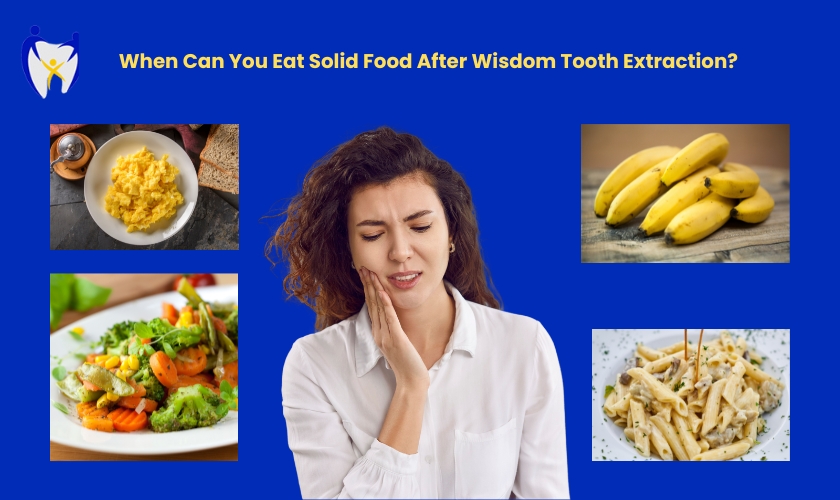Navigating the Post-Op Diet: What to Eat After Wisdom Teeth Removal
Following wisdom teeth removal, a crucial aspect of recovery involves modifying your diet to promote healing, minimize discomfort, and prevent complications. This comprehensive guide explores the recommended timeline for eating after wisdom teeth removal, outlines suitable food options for each stage, and provides a helpful FAQ section to address your dietary concerns during this time.
Understanding the Importance of Diet
While the initial focus after wisdom teeth removal is on pain management and rest, maintaining a proper diet plays a significant role in the healing process. Here’s why:
- Minimizing Discomfort: Soft foods require minimal chewing, reducing pressure on the extraction sites and minimizing pain and discomfort.
- Promoting Healing: Certain nutrients like vitamins, minerals, and protein are essential for optimal tissue repair and healing of the extraction sockets.
- Preventing Complications: Maintaining good nutrition helps strengthen your immune system, potentially reducing the risk of infection after surgery.
The Post-Op Diet Timeline: A Guide to What to Eat
Following wisdom teeth removal, a gradual progression through various food types is recommended:
- First 24 Hours: Focus on liquids and very soft foods that don’t require chewing. Examples include:
- Broth (chicken, vegetable)
- Cool or lukewarm soups (cream of mushroom, tomato)
- Yogurt (plain or Greek yogurt)
- Applesauce
- Popsicles (sugar-free)
- Day 2-3: As swelling and discomfort subside, you can cautiously introduce some soft, easily chewable foods. Options include:
- Mashed potatoes
- Scrambled eggs
- Soft cooked pasta or noodles
- Steamed vegetables (well-cooked and softened)
- Soft fruits (bananas, ripe pears)
- Well-cooked fish or chicken (flaked or shredded)
- Day 4-7: You can gradually incorporate a wider variety of soft foods, ensuring they are comfortable to chew. Examples include:
- Soft cheese
- Soft tofu
- Well-cooked ground meat (broken into small pieces)
- Soft bread (white bread, wheat bread)
- Oatmeal (cooked soft)
- Beyond Day 7: As healing progresses and discomfort diminishes, you can slowly transition back to your regular diet. However, continue to avoid hard, crunchy, or chewy foods that might irritate the extraction sites or dislodge blood clots.
Foods to Avoid During Recovery
Here are some foods to avoid during the initial healing phase after wisdom teeth removal:
- Hard or Crunchy Foods: These can irritate the extraction sites and make chewing uncomfortable. Examples include nuts, seeds, raw vegetables, chips, crackers, and popcorn.
- Sticky Foods: These can adhere to the extraction sites and potentially disrupt healing. Examples include candy, chewy sweets, dried fruits, and sticky sauces.
- Spicy Foods: Spicy ingredients can irritate the sensitive tissues in your mouth and exacerbate discomfort.
- Hot Beverages: Extremely hot drinks can irritate the extraction sites. Allow your food and beverages to cool before consumption.
- Carbonated Drinks: The carbonation can irritate your mouth and potentially cause discomfort.
Additional Dietary Tips for Optimal Healing
Here are some additional tips to promote a smooth recovery and maintain a healthy diet after wisdom teeth removal:
- Stay Hydrated: Drink plenty of fluids throughout the day to prevent dehydration, especially since some of your initial post-surgery diet will be liquids. Water is the best option, but cool or lukewarm sugar-free drinks are also acceptable.
- Small Frequent Meals: Opt for smaller, more frequent meals throughout the day instead of three large meals. This can help minimize discomfort when chewing.
- Nutrient-Rich Foods: Choose foods rich in vitamins, minerals, and protein to support healing.
- Listen to Your Body: Pay attention to how your mouth feels while eating. If you experience pain or discomfort, stop eating that particular food and opt for something softer.
- Maintain Good Oral Hygiene: Brushing and rinsing gently after meals is crucial to maintain oral hygiene and prevent infection. (Refer to our separate guide on brushing after wisdom teeth removal for detailed instructions)
FAQ on Eating After Wisdom Teeth Removal
Q: Can I eat solid food after wisdom teeth removal?
You can gradually introduce soft solids after the first 24 hours, as tolerated. Focus on easily chewable foods that won’t irritate the extraction sites.
Q: How long should I stick to a soft food diet?
The duration of the soft food diet can vary depending on your healing process. Generally, a soft food diet is recommended for 3-7 days.

